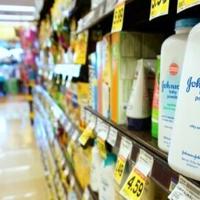The World Health Organization's (WHO) cancer agency, the International Agency for Research on Cancer (IARC), has classified talc as "probably carcinogenic" to humans. This announcement, however, has been met with caution from experts who warn against misinterpreting the findings.
The classification is based on "limited evidence" of talc causing ovarian cancer in humans, "sufficient evidence" linking it to cancer in rats, and "strong mechanistic evidence" showing carcinogenic signs in human cells.
Talc is a naturally occurring mineral widely mined and used in various products, most notably in talcum powder for babies and cosmetics. Most people are exposed to talc through these products, but significant exposure also occurs during mining, processing, and manufacturing.
The IARC's decision was prompted by numerous studies showing an increased risk of ovarian cancer in women who use talc on their genitals. However, the agency acknowledged that some studies might have been influenced by the presence of asbestos, a known carcinogen, in the talc samples.
Despite the findings, Kevin McConway, a statistician at the UK's Open University, stressed that the IARC's classification doesn't necessarily establish a direct causal link between talc use and cancer.
"The most obvious interpretation is actually misleading," McConway said. The agency aims to determine if a substance has the potential to cause cancer under specific, unspecified conditions. Since the studies were observational, they couldn't prove causation.
The announcement comes just weeks after Johnson & Johnson, a US pharmaceutical and cosmetics giant, settled allegations about misleading customers regarding the safety of its talc-based products for $700 million. While Johnson & Johnson did not admit wrongdoing, the company withdrew the product from the North American market in 2020.
A 2020 summary of studies involving 250,000 women in the US didn't find a statistical link between talc use on the genitals and ovarian cancer risk.
On the same day, the IARC classified acrylonitrile, a chemical used in polymer production, as "carcinogenic to humans", its highest warning level. The classification was based on "sufficient evidence" linking acrylonitrile to lung cancer.
Acrylonitrile-based polymers are used in various consumer products, including clothes fibres, carpets, plastics, and other items.
Article
Business

Talc Classified as "Probably Carcinogenic" by WHO

